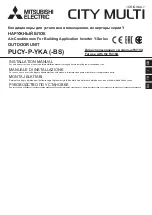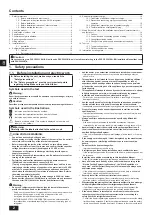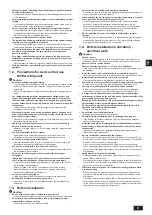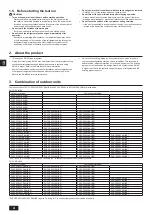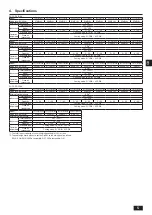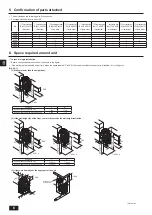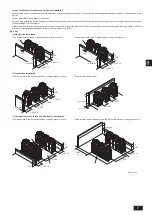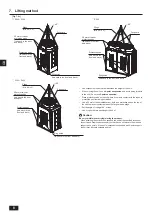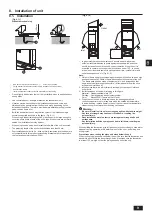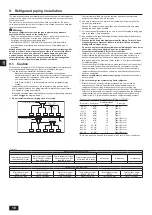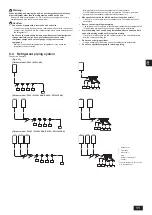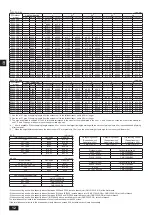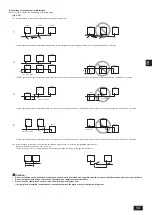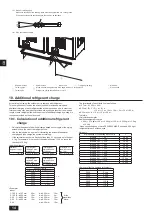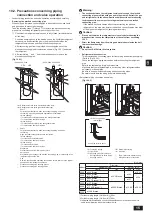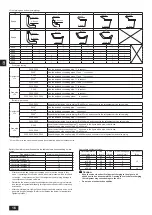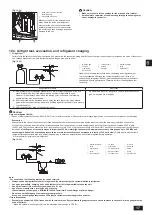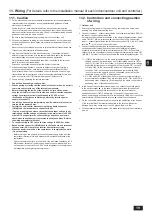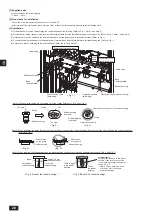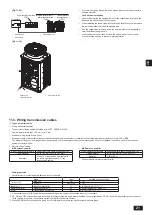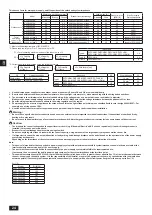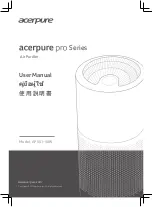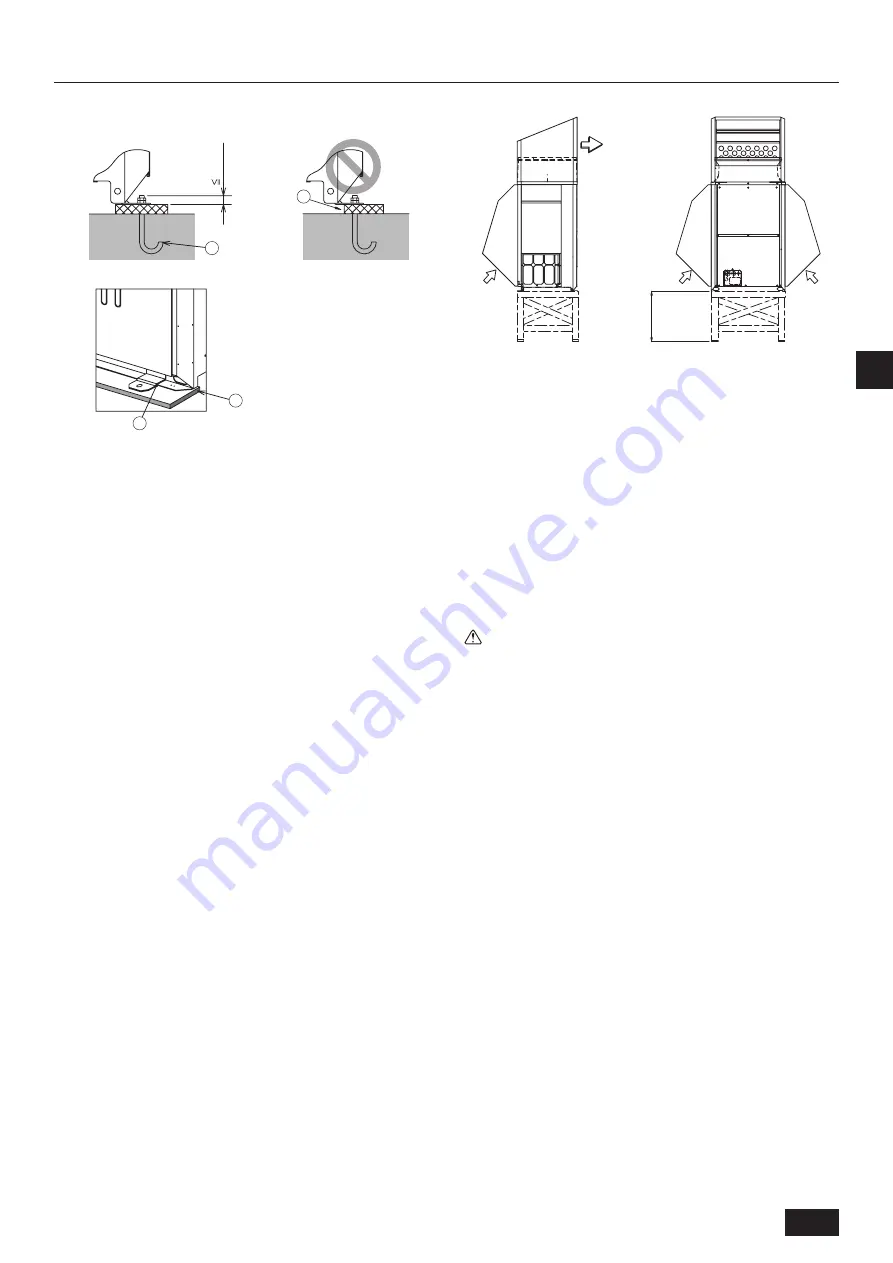
9
GB
[Fig. 8.1.2]
H
Inlet
Outlet
Inlet
Inlet
•
In abnormally harsh environments such as cold and/or windy areas,
sufficient countermeasures to guard against excessive wind and snow
should be taken to ensure the unit's correct operation. When the unit is
expected to operate in cooling mode in conditions under 10°C, in snowy
areas, in environments subject to strong winds or rain, install air inlet and
outlet ducting as shown in [Fig. 8.1.2].
Note:
1. Height of frame base for snow damage prevention (H) shall be twice as high
as expected snowfall. Width of frame base shall not exceed that of the unit.
The frame base shall be made of angle steel, etc., and designed so that
snow and wind slip through the structure. (If frame base is too wide, snow
will be accumulated on it.)
2. Install unit so that wind will not directly lash against openings of inlet and
outlet ducts.
3. Build frame base at customer referring to this figure.
Material : Galvanized steel plate 1.2T
Painting : Overall painting with polyester powder
Color
: Munsell 5Y8/1 (same as that of unit)
4. When the unit is used in a cold region and the heating operation is
continuously performed for a long time when the outside air temperature
is below freezing, install a heater to the unit base or take other appropriate
measures to prevent water from freezing on the base.
Warning:
• Be sure to install unit in a place strong enough to withstand its weight.
Any lack of strength may cause unit to fall down, resulting in a
personal injury.
• Have installation work in order to protect against strong winds and
earthquakes.
Any installation deficiency may cause unit to fall down, resulting in a
personal injury.
When building the foundation, give full attention to the floor strength, drain water
disposal <during operation, drain water flows out of the unit>, and piping and
wiring routes.
Precautions when routing the pipes and wires below the unit
When routing the pipes and wires below the unit, be sure that the foundation and
base work do not block the base through-holes. Also make sure the foundation
is at least 100 mm high so that the piping can pass under the unit.
A
M10 anchor bolt procured at the site
B
Corner is not seated.
C
Fixing bracket for the hole-in anchor bolt (3 locations to fix with screws)
D
Anti-vibration rubber
Install it so that the rubber covers the entire width of the unit leg.
•
Fix unit tightly with bolts so that unit will not fall down due to earthquakes or
strong winds.
•
Use concrete base or an angle bracket as the foundation of unit.
•
Vibration may be transmitted to the installation section and noise and
vibration may be generated from the floor and walls, depending on the
installation conditions. Therefore, provide ample vibrationproofing (cushion
pads, cushion frame, etc.).
•
Build the foundation in such way that the corner of the installation leg is
securely supported as shown in the figure. (Fig. 8.1.1)
When using a rubber isolating cushion, please ensure it is large enough to
cover the entire width of each of the unit's legs. If the corners are not firmly
seated, the installation feet may be bent.
•
When using cushion pads, be sure that the full width of the unit is covered.
•
The projecting length of the anchor bolt should be less than 30 mm.
• Post-installed anchor bolts (i.e., bolts not firmly cemented into the base) are
not compatible with this product unless fixing brackets are first mounted on
the four locations (six locations: P500).
8. Installation of unit
8.1. Installation
[Fig. 8.1.1]
Without detachable leg
A
B
C
30 mm
D

